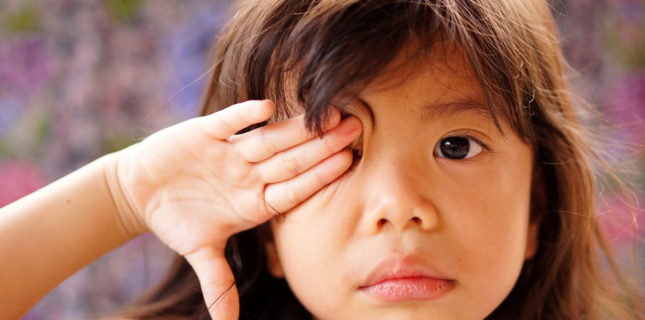
Keeping Kids’ Eyes Safe from Chemical Burns
The frequency of visits to emergency rooms due to ocular chemical burns among kids is on the rise. Here are 9 things you need to share with staff and parents about keeping young eyes away from household chemicals.
Tip: “Caregivers need to know the importance of immediately flushing the eye with water for at least 15 minutes.”
A just-released nationwide study of chemical ocular burns presenting in emergency rooms for the year ending April 25, 2016 found:
- AGES. Injuries were most prevalent among young children—ages 2 of under—according to the research conducted by Johns Hopkins University.
- BURNS. Among the 144,000 burns sampled for the study, alkali injuries were seen in 56% of cases, while acid burns were the cause of 46.4% of ER visits.
- PREVALENCE. Injuries most often occurred in lower income families and more often in the South than other regions.
- COST. As reported in JAMA Ophthalmology, the study determined that during the year-long research period, ocular burn injuries resulted in 36,000 ER visits, at a cost of more than $26M in billing fees.
- CONCLUSION. According to Johns Hopkins researchers, “Chemical ocular injuries among young children are almost entirely preventable if dangerous agents are properly stored.”
- MESSAGING. The study recommends you be proactive with parents of young children and tell them to install cabinet locks and avoid storing household chemicals in easy-to-reach areas like under-sink shelving or ground-accessible cabinets.
- TRENDING. One of the newest, and most preventable, problems seen in ERs is contact between young children and today’s fun-looking but very dangerous dishwashing pods. Discuss this with parents, stressing the importance of storing these in a locked location.
- EDUCATION. The AMA underscores the importance of eyecare professionals educating all potential caregivers, not just parents, on how to prevent and initially treat these accidents. Just as important, make sure local police officers and paramedics in your area know what to do, as timely and CORRECT treatment can minimize the injury, where as incorrect first steps can increase the damage.
- STEPS. The American Optometric Association stresses that before professional treatment begins, caregivers need to know the importance of:
- immediately flushing the eye with water for at least 15 minutes;
- depending on the location of the child, putting the eye under a faucet or shower if indoors, a garden hose if outside, or, alternatively, pouring water into the eye from a clean container;
- not attempting to neutralize the chemical with other substances;
- not bandaging the eye;
- and, most important, seeking immediate medical attention after flushing.
- POST. Make sure you post this information in your office, both where staff can review the necessary steps and where parents can read what to do. While you will hopefully review prevention and treatment with parents and caregivers, having it reinforced in signage is a smart policy.
Do you discuss this subject with staff members, and detail what to do in the event of an emergency with parents of young children and all caregivers? Tell us what you say to drive this message home and join in this important conversation here on Facebook.
Comments are closed.







